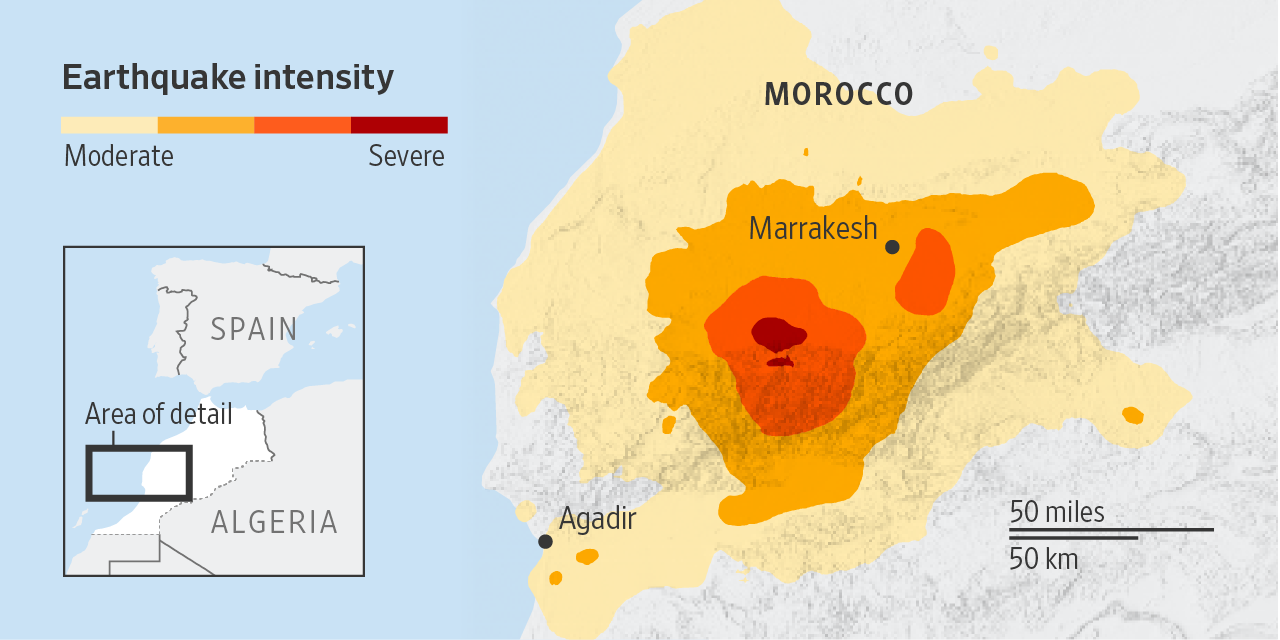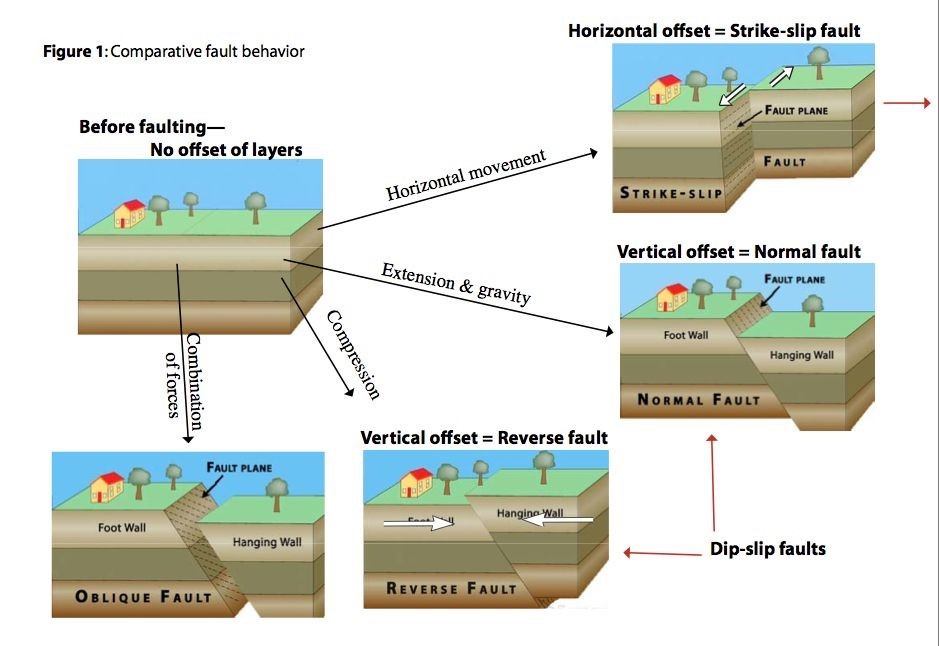Description

Disclaimer: Copyright infringement not intended.
Details
- The earthquake struck 72km (45 miles) southwest of Marrakesh.
- Its epicenter was located in the Ighil area, a mountainous rural commune home to small farming villages in Al-Haouz province near the ski resort of Oukaimeden in the Atlas Mountains.
- The quake was felt all over the country, including in the provinces of Ouarzazate, Marrakesh, Azilal, Chichaoua, and Taroudant.
- In the coastal cities of Rabat, Casablanca, Agadir, and Essaouira, many panicked residents rushed out into the streets in the middle of the night, fearing that their homes would collapse.
- Tremors were felt as far away as Huelva and Jaen in southern Spain.
About Earthquake
- An earthquake is the shaking of the Earth when two blocks of the earth suddenly slip past one another.
- The surface where they slip is called the fault or fault plane.
- The location below the earth's surface where the earthquake starts are called the hypocenter, and the location directly above it on the surface of the earth is called the epicenter.

Types of Earthquakes:
- Tectonic: A tectonic earthquake occurs when the earth's crust breaks due to geological forces on rocks and adjoining plates that cause physical and chemical changes.
- Volcanic: A volcanic earthquake is any earthquake that results from tectonic forces that occur in conjunction with volcanic activity.
- Collapse: A collapse earthquake is a small earthquake in underground caverns and mines that is caused by seismic waves produced from the explosion of rock on the surface.
- Explosion: An explosion earthquake is an earthquake that is the result of the detonation of a nuclear and/or chemical device.
- Reservoir-induced Earthquakes: These occur in the areas of huge reservoirs like dams.
Seismic Zones of India:
- Seismic zones in the Indian subcontinent are divided into four seismic zones (II, III, IV, and V) based on
- scientific inputs relating to seismicity,
- Earthquakes occurred in the past and
- Tectonic setup of the region.
- The Bureau of Indian Standards is the official agency for publishing seismic hazard maps and codes.
- It has brought out versions of seismic zoning maps: a six-zone map in 1962, a seven-zone map in 1966, and a five-zone map 1970/1984

Seismic Active Zones:
- Seismic Zone II
- Seismic Zone III
- Seismic Zone IV
- Seismic Zone V
|
Mercalli Scale: a twelve-point scale for expressing the local intensity of an earthquake, ranging from I (virtually imperceptible) to XII (destruction).
Richter scale: It is a scale of numbers used to tell the power (or magnitude) of earthquakes.
|
Causes of Earthquakes in India
- North–East region: Collision zones of the Himalayan belt and Sumatran belt. Kopili fault is currently the most active seismic zone in North East India.
- Himalayan belt–Collision between Indo-Austral plate with Eurasian plate and Burma Plate with Java Sumatra.
- Andaman and Nicobar Islands–Seafloor displacement and underwater volcanoes.
- Deccan Plateau–Fault line and energy build-up along the fault line of the river Bhima (Krishna) near Latur and Osmanabad (Maharashtra).
- Anthropogenic: Increasing population and unscientific land use in construction.
Impact of Earthquakes
- Loss of Human Lives
- Change in River Course
- Landslide
- Floods
- Land Slide
- Tsunami
- Floods
- Avalanches
- Damage to property
About Morocco
- It is a hilly country in western North Africa that borders the Strait of Gibraltar.
- It has preserved much of its old architecture as well as many of its traditional practices.
- Casablanca, Morocco's largest city and main Atlantic Ocean port, is an industrial and economic center.
- Rabat is the capital.
- It is bounded to the east and southeast by Algeria, to the south by the Western Sahara, to the west by the Atlantic Ocean, and the north by the Mediterranean Sea.
- It is the only African country with coastlines on both the Atlantic and Mediterranean seas.
- Ceuta and Melilla, two small Spanish enclaves, are located on the country's northern coast.
- Major Mountain Ranges: Atlas and Rif mountain ranges
- Spoken Languages: Arabic and Amazigh (Tamazight).
- Religion: Islam predominates, having a rich Islamic heritage.
- Morocco's political system is a constitutional monarchy with two legislative bodies.
- Economy: The Moroccan economy is still strongly reliant on raw material exports.
|
PRACTICE QUESTION
Discuss about types of Seismic waves and causes of earthquakes in India.
|

https://www.indiatoday.in/world/story/morocco-earthquake-dead-injured-aid-marrakesh-2433576-2023-09-10
https://www.downtoearth.org.in/blog/natural-disasters/why-are-shallow-earthquakes-more-destructive-the-disaster-in-java-is-a-devastating-example-86172
https://www.aljazeera.com/news/2023/9/10/what-we-know-about-the-morocco-earthquake-as-rescue-efforts-continue












